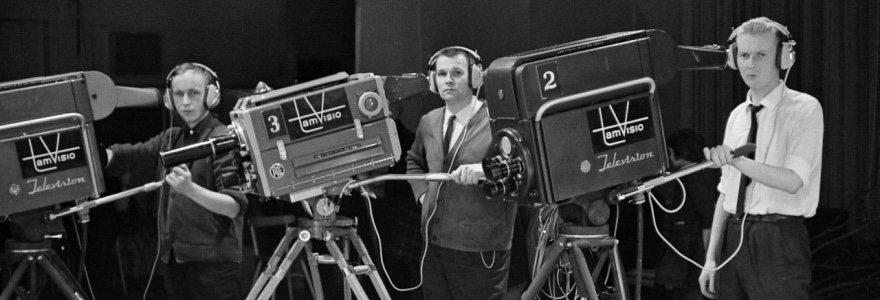ALEKSEY VAYS
On expressing emotions and freedom in tango
(continuation of the articles 'On dance, feelings and choice' and 'On expectations, rejections and fears')
Ask anyone at a milonga, "Why do you dance?" and you will probably hear, "What do you mean, why? Because I like to dance!" Of course, it's unlikely that we would spend so much free time on the dance floor without gratification. But gratification is a result; the underlying motivation is deeper. Motivation in this case may be attributed to one of two diametrically opposed objectives: self-expression and self-validation. When one of these objectives is met, we're gratified.
Self-validation is a fleeting satisfaction of a desire for a label or valuation, which usually comes from the outside, from someone else. Even when I label myself, it's pure self-validation.
Self-expression is a state, in which no valuations are necessary. Self-expression is when my knowing of who I am comes from within, and is expressed in my thoughts, words and actions.
Self-validation is a fleeting satisfaction of a desire for a label or valuation, which usually comes from the outside, from someone else. Even when I label myself, it's pure self-validation.
Self-expression is a state, in which no valuations are necessary. Self-expression is when my knowing of who I am comes from within, and is expressed in my thoughts, words and actions.
Self-expression is a state, in which no valuations are necessary.
My dance reflects my objective. If I'm dancing to validate myself, I'm pursuing a valuation from myself or from others. First of all, it concerns my partner. Does she like dancing with me? How do I make a good impression? What do the others think of me? My inner dialogue begins to sound like an argument between a "good cop" and a "bad cop," takes up most of my attention, and puts my movements on autopilot, making the dance secondary.
And if I'm dancing to express myself, I'm only guided by what's inside, focused on my state. This integrity liberates me from needing any valuation. Liberation, as a result, manifests in my dance. By liberating myself I set the corresponding example for others. First of all, it concerns my partner.
And if I'm dancing to express myself, I'm only guided by what's inside, focused on my state. This integrity liberates me from needing any valuation. Liberation, as a result, manifests in my dance. By liberating myself I set the corresponding example for others. First of all, it concerns my partner.
What does my partner feel? What am I feeling?
There's no inner dialogue – I'm here and now.
There's no inner dialogue – I'm here and now.
A dear friend of mine told me about an interesting phenomenon she noticed at El Corte milongas in Amsterdam: "The dancing hall at this milonga is dimly lit, and is separated from the cabeceo lounge by a corridor. Dancers can only be observed from the entrance, and only the near part of the ronda is visible. I dance with my eyes closed, and I could distinctly feel when we would pass in front of the "display!" In other words, her partner's dance tangibly changed when others would be looking – his self-expression changed to self-validation, even if for a brief period of time. If a separated dance floor is rather an exception, then what about other milongas, where dancers can be seen all the time?
People are faced with a big problem – they're not expressing their emotions. It's considered impolite to laugh out loud in public; if someone is crying, we automatically think that there's something wrong with them. Other people's emotions are generally considered as something unwanted – as a nuisance or even as aggression. Following unspoken rules of etiquette leads to a lack of opportunity for people to release emotional energy, to express their emotions. Unreleased emotional energy remains in the body and becomes toxic, manifesting – in the best case – as muscle knots.
People are faced with a big problem – they're not expressing their emotions. It's considered impolite to laugh out loud in public; if someone is crying, we automatically think that there's something wrong with them. Other people's emotions are generally considered as something unwanted – as a nuisance or even as aggression. Following unspoken rules of etiquette leads to a lack of opportunity for people to release emotional energy, to express their emotions. Unreleased emotional energy remains in the body and becomes toxic, manifesting – in the best case – as muscle knots.
Unreleased emotional energy remains in the body and becomes toxic.
The variety of moods in tango music allows me to express practically the entire emotional spectrum. Simply by listening to a composition, I can feel its emotional charge. Dance, in turn, catalyzes something much bigger – when I dance, I'm expressing, and therefore releasing these emotions, letting them go. This is freedom. Oftentimes we end the dance to an especially loony composition with a burst of laughter. There were instances, when my partner and I left the dance floor with tears in our eyes.
After I spoke about expressing my emotions in dance with one wonderful partner, Pugliese's "Emancipacion" began playing. She said, half-jokingly,
After I spoke about expressing my emotions in dance with one wonderful partner, Pugliese's "Emancipacion" began playing. She said, half-jokingly,
"Now I'm afraid to dance this with you!"
There is an important point to consider: under no circumstances would I direct my emotional energy toward my partner; I only direct this energy toward the floor.
The possibility of emotional liberation in tango depends on the level of unrestraint of both partners. If one of the partners is afraid of something, then neither one will be able to express their emotions. If one of the partners' objective is self-validation, then self-expression will be out of reach for both. I use my partner to self-validate; self-expression, on the other hand, means I'm providing her with a freedom of choice – I'm allowing her to do the same.
The possibility of emotional liberation in tango depends on the level of unrestraint of both partners. If one of the partners is afraid of something, then neither one will be able to express their emotions. If one of the partners' objective is self-validation, then self-expression will be out of reach for both. I use my partner to self-validate; self-expression, on the other hand, means I'm providing her with a freedom of choice – I'm allowing her to do the same.
Author: Aleksey Vays. Opinions expressed in articles within this blog may not coincide with those of the editor.
Subscribe to Simple&Elegant Blog to keep in touch!
We use cookies and other metadata to provide the best experience. If you don't agree with the Policy, you can leave the site.
Ok, thanks!
All text, photo and video materials belong to their owners.
Reference to the source is obligatory.
Photo and other credits: Dream Team
© Elegance is Simple. All Rights Reserved.
hello@simplenelegant.com
Reference to the source is obligatory.
Photo and other credits: Dream Team
© Elegance is Simple. All Rights Reserved.
hello@simplenelegant.com

Dream Team
Video, Editing, Directing and Creative Support - Daria Ermolaeva
Video Operating - Vladimir Kutakhov
Animation and pictures - Evgenja Chernikova
Logo and icons - Anastasia Rotar
Photo - Anya Semenyuk, Daria Ermolaeva, Viktoria Fedirko, Maria Mosolova, Dmitry Volkov, kaboompics.com, imagefinder.co, freestock.org, gratisography.com, facebook.com
All photos are used with the permission of their owners and/or have an open license.
Video Operating - Vladimir Kutakhov
Animation and pictures - Evgenja Chernikova
Logo and icons - Anastasia Rotar
Photo - Anya Semenyuk, Daria Ermolaeva, Viktoria Fedirko, Maria Mosolova, Dmitry Volkov, kaboompics.com, imagefinder.co, freestock.org, gratisography.com, facebook.com
All photos are used with the permission of their owners and/or have an open license.

